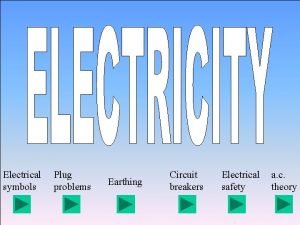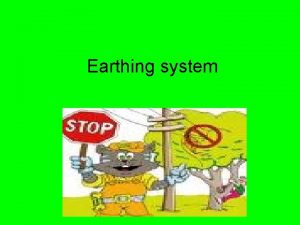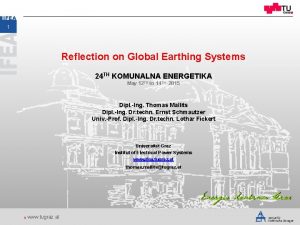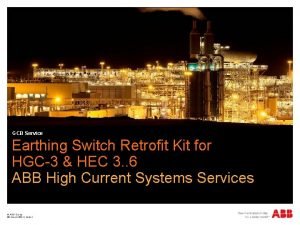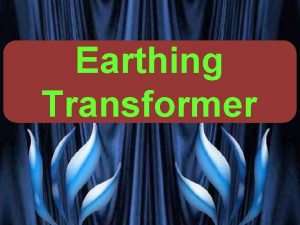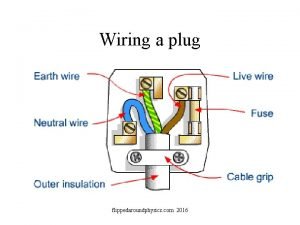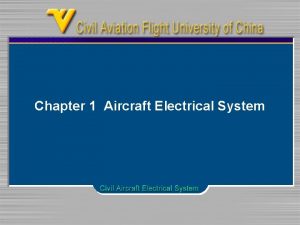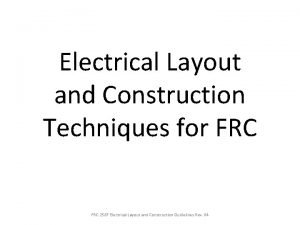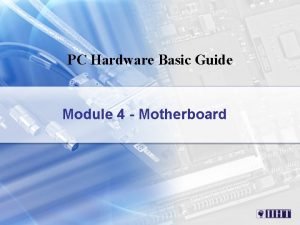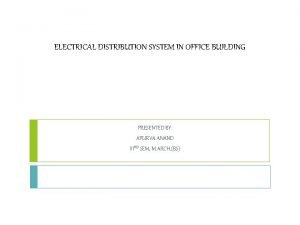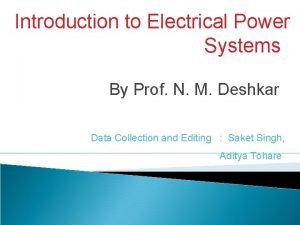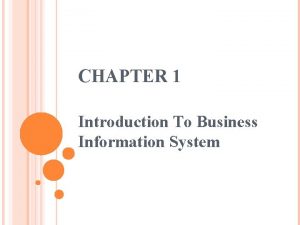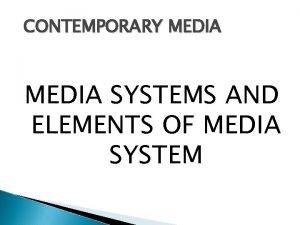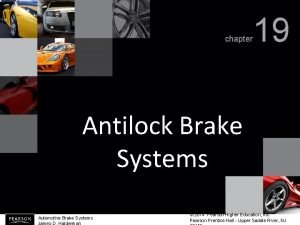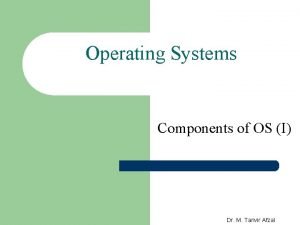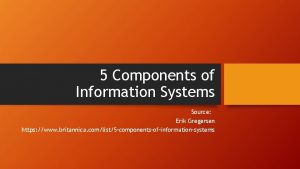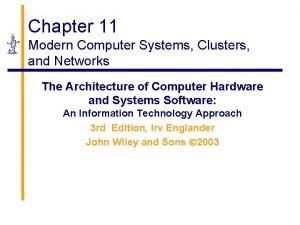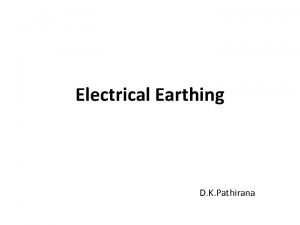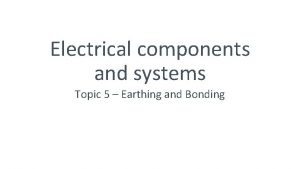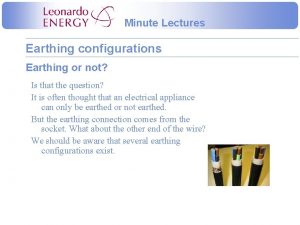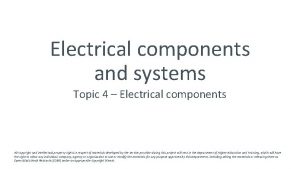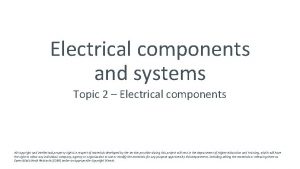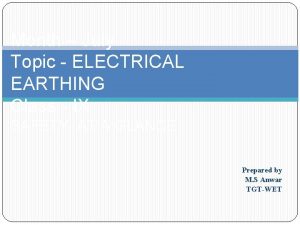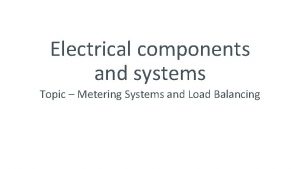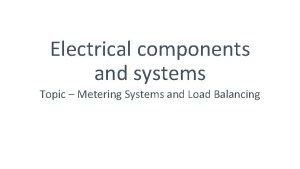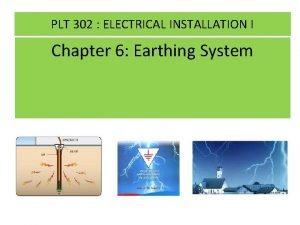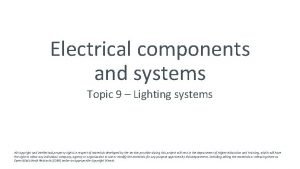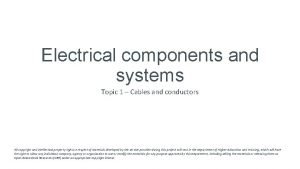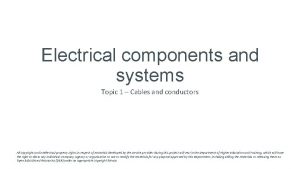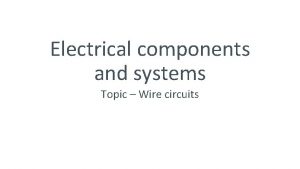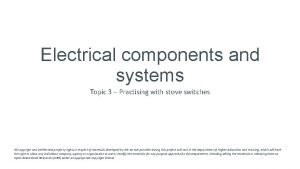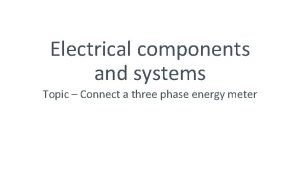Electrical components and systems Topic 5 Earthing and





























- Slides: 29

Electrical components and systems Topic 5 – Earthing and Bonding

Three-phase earth leakage protection Unit 5. 2

Assumed prior learning • Electrical components (circuit protection) • How Single Phase AC Motors Work • Single phase earth leakage protection • Don’t feel confident yet about these topics? Click on each to review the content. • Feeling confident? Click next to proceed with this unit.

Outcomes • Explain the principle of operation of a three-phase core-balance earth leakage relay. • Name and briefly describe the operation of the three types of commonly used earth leakage protection units. • Explain what is meant by the terms “sensitivity” and “k. A rating” of an earth leakage protection unit. • Draw circuit diagrams to explain how a MS 1 / MS 2 relay, and a core balance relay with separate core are connected in a circuit. • Explain what a circuit breaker is, what is meant by the term “breaking capacity” and name two types of overloads used in circuit breakers.

Introduction A fundamental principle in the wiring or cabling in underground situations, factories, offices and domestic installations, is to ensure the safety of persons, animals and property against the hazards that may arise in the daily use of electricity. Earth leakage protection is essential in any electrical installation.

Core balance relay The operating principle of a core balance relay in a three-phase circuit is the same as for a single-phase circuit (discussed in single-phase earth leakage protection). The currents flowing in the conductors are always in balance if there is no earth fault (see diagrams below). The sketches are drawn to explain the counter balancing of currents and cannot be taken as indicating fixed values and directions, because the values and direction of current flow constantly change. However, they are always balanced in a “healthy” circuit.

Operation of core balance relay If the three or four wires are passed through a soft iron core with a secondary winding as shown in the figure below, and the circuit is in balance, the resultant magnetic flux in the core, caused by the currents, will be in balance and equal to zero. Therefore no emf will be induced in the secondary coil. Earth leakage relay

Types of earth leakage protection units There are many different types of earth leakage protection units and circuit breakers on the market, but we look at only the three most commonly used types: • High sensitivity earth leakage protection units, • Sensitive core balance relay, and • Sensitive core balance relay with separate core.

High sensitivity earth leakage protection units The compact, high sensitivity current operated earth leakage unit for protection of persons on direct contact, operates on the core balance principle discussed earlier. Click for more information

Sensitive core balance relay There are two types of relays in this range, the MS 1, which is instantaneous and the MS 2, which has a time delay before tripping. the sensitivity of the different MS 2 relays is depicted in the graph. Click for more information

Operation of sensitive core balance relay Click on each figure to learn more about the operation of the sensitive core balance relay.

Sensitive core balance relay with separate core •

Operation of sensitive core balance relay with separate core Click for more information

Circuit breakers are discussed in detail in the ‘electrical components (circuit protection)’ unit, in this unit we will just go over the basics. Circuit breakers are divided into three groups; small frame Miniature Circuit Breakers (MCB’s), large frame Moulded Case Circuit Breakers (MCCB’s) and Air Circuit Breakers (ACB’s).

Moulded case circuit breaker Construction of a moulded case circuit breaker

Terminology The following terms are often used in connection with circuit breakers and should be understood: • Breaking capacity (k. A) / Interrupting capacity • Hydraulic magnetic • Thermal magnetic • Shunt trip

Bonding The aim of bonding is to bring all the bonded parts to the same electrical potential and reduce the risk of electrical shocks. Bonding to electrical earth is used to ensure that all conductors (person, surface and product) are at the same electrical potential. When all conductors are at the same potential no discharge can occur. Refer to SANS Regulations 6. 13 for detailed descriptions of items that may be bonded.

Parts to be bonded According to SANS Regulation 6. 13. 2 the following parts should be bonded: • Hot and cold water systems • Antennas. • Roofs, gutters, down pipes and waste pipes • Water pumps

Quiz time We have come to the end of this unit. Answer the following questions to test your knowledge of three-phase earth leakage protection.

Question 1 Name three types of earth leakage protection units as mentioned in this unit. 1) 2) 3)

Question 2 True or false: If an earth fault should occur, as shown by the dotted line in the diagram, some current will flow directly to earth and cause a balance in the currents flowing through the core. TRUE FALSE

Question 3 Name two types of overloads used in circuit breakers, mentioned in this unit. 1) 2)

Question 4 What is the aim of bonding? a) b) c) d) To earth appliances To earth all electrical armouring of cable To bring all the bonded parts to the same electrical potential To bring all electrical cables to the same electrical point

Question 5 Which of the items listed below need to be bonded? a) b) c) d) Spiral iron staircase Galvanized roof Aluminium TV dish All of the above

Let’s review: In this lesson we have covered: üCore balance relays. üThree-phase earth leakage protection. üTypes and operation of earth leakage protection units. üCircuit breaker basics. üBonding. Make sure you have a complete understanding of all the work covered here before you start the next unit.

Table brief – Table 1

Video brief - Vid 01

Video brief - Vid 01 continued

Video brief - Vid 02
 Electrical earth symbol
Electrical earth symbol Broad and specific topic examples
Broad and specific topic examples Broad and specific topic examples
Broad and specific topic examples What are the objectives of earthing
What are the objectives of earthing Pe connection
Pe connection Global earthing system
Global earthing system Earthing
Earthing Earthing transformer protection
Earthing transformer protection Live and neutral wires
Live and neutral wires Aircraft electrical system components
Aircraft electrical system components Frc control system layout
Frc control system layout Module 4 topic 2 components of the space management system
Module 4 topic 2 components of the space management system Topic, supporting and concluding sentences examples
Topic, supporting and concluding sentences examples Electrical rising main
Electrical rising main Free enterprise system def
Free enterprise system def Mechanical system modeling examples
Mechanical system modeling examples Introduction to electrical power systems
Introduction to electrical power systems One electrical systems
One electrical systems Module 10 topic 2 vehicle malfunctions
Module 10 topic 2 vehicle malfunctions Components of an operating system
Components of an operating system Components of operating systems
Components of operating systems What are the main components of file management
What are the main components of file management Introduction to information system in business
Introduction to information system in business Types of media system
Types of media system Kelsey hayes abs module diagram
Kelsey hayes abs module diagram Components of operating system
Components of operating system Information system 5 components
Information system 5 components Computer systems components
Computer systems components Decision support systems and intelligent systems
Decision support systems and intelligent systems Engineering elegant systems: theory of systems engineering
Engineering elegant systems: theory of systems engineering
